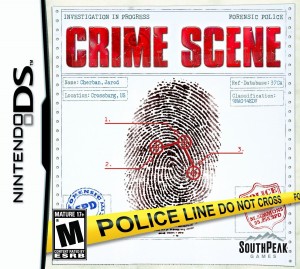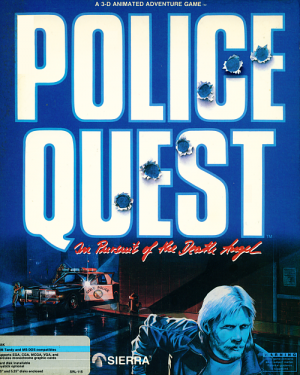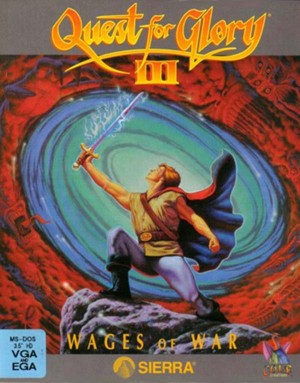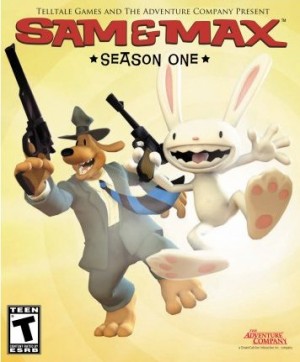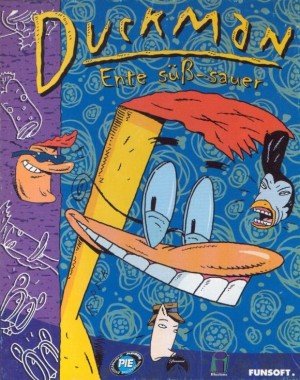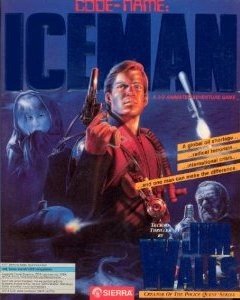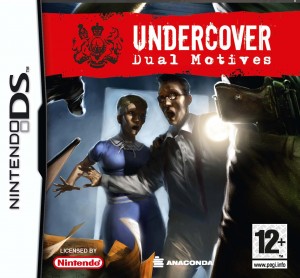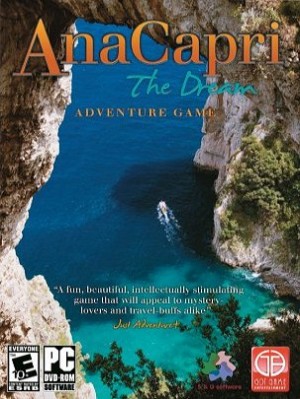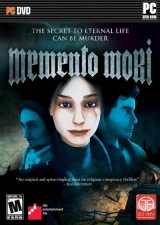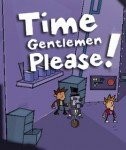Review for Crime Scene

White Birds’ Crime Scene, also known as Criminology in various parts of Europe, was the last adventure game developed by Benoît Sokal’s French studio before it closed its doors. There’s probably a connection there. Whether this forensic mystery for the Nintendo DS is reflective of the company’s financial struggles at the time or merely contributed to its demise after the fact, one thing is clear: Crime Scene doesn't even approach the quality of company’s previous titles. Not only does it suffer from confusingly shallow storylines, the gameplay is so full of tedious minigames that are so brutally unforgiving that you'll want to commit unspeakable acts of violence of your own before long.
The fictional Crossburg is a city where crime is rife and corruption is part of everyday life. Players control Matt Simmons, a young detective eager to serve justice and make Crossburg a safer place. Matt is a forensic specialist dropped head-first into his first case, in which a high-ranking police officer and his wife seem to have died in a double suicide. But there is some suspicion of murder, and it is your job to visit their home and collect evidence to prove how and why they died. That is only the beginning, however, and you’ll investigate five cases in total, each one linked together by shared suspects, motives, locations or witnesses. These cases deal with serious crimes like murder, drug trafficking, terrorism, illegal testing, and kidnapping. Exciting as that may sound, Crime Scene succeeds only in showing that being a forensic investigator isn't anything at all like what they show on CSI. Instead, if we believe the game, it is interminably boring and extremely punishing, often for things beyond your control.
The DS top screen is used for displaying characters during dialogues, location overviews during investigations, and forensic apparatus during analysis. The touch screen is where the action happens, along with a couple of icons to bring up a quick travel map, clue inventory, an overview of all characters in the current case, your email, and access to the game’s hint system. In each location, you must find areas of interest by sliding the stylus until the cursor changes shape, though even that is hard to see, as the default circle merely radiates slowly and slightly outwards. Sometimes a scene will clearly show a pool of blood or a tire mark, but other times it’s just a tiny box in the corner of a room that contains a clue. A lot of time is spent simply hunting for those pixels that'll indicate there is something relevant hidden there. It doesn’t help that hotspots remain active even after you've collected the necessary evidence from them, though the game does tell you when you have found everything in that particular location.
Once you locate a point of interest, a simple tap brings up a detailed view that allows you to collect items or samples. A few tools in your kit allow you to see or access hidden evidence, such as a UV lamp and blue spray to reveal wiped blood stains. To accomplish the actual collection, you'll need to use the correct tool from a selection of about ten, and the game judges how well you perform by filling or decreasing a competence meter. Use the wrong tool for the job, or use it incorrectly, and you get punished. This sounds reasonable in theory, but often there isn’t enough feedback to make the proper choice. It’s possible to lose points for using a glove where a tweezer is needed, but how are you supposed to know if a bullet is lodged too deeply to just pick it up?
Even when you do select the right instrument, you won’t know what to do with it, at least at first. The manual offers no explanation, and although some brief text instructions provide basic pointers when you first need to use a new tool, the directions are very vague. What’s worse is that you have a limited time to perform the task successfully, and any time spent reading instructions is valuable time lost for actually carrying them out. Why not add a full tutorial session in which you can practise until you are confident about using a particular tool? Or better yet, just scrapping the pointless timer and fail clauses entirely? After successfully completing a particular task for the first time, it does get a little easier once you know what you are supposed to be doing, but there are enough different tools that you’ll feel at a serious disadvantage for quite a while.
Of course, success is not something even a tutorial can guarantee, as using a tool isn’t just a matter of applying inventory like in most games. Most of the evidence collection is done in the form of minigames. For instance, gathering fluids requires dipping a swab in a solution while a gauge sways from green to red. If you leave it in too long, the swab breaks and you lose points. By rubbing the wetted swab over the stain while holding a shoulder button as yet another meter decreases, you gather the fluid, whether blood or sweat or detergent. This takes an immense amount of precision and a great deal of luck, as the actual area in which you need to sweep your swab is much smaller than the stain, and you can't see where you are supposed to touch and where you aren’t. Every time you go outside this invisible area, your swab breaks and you get punished. Use up too many swabs and your boss Alexandra fires you from the team – game over. With some stains, it can easily take dozens of tries to get it right, which is a lot of unemployment.
That’s just one example, but most of the processes are problematic in their own ways. To use the tweezers or scalpel, you'll need to follow a pattern on the screen with your stylus, sometimes repeatedly, until the timer runs out. The problem is, the touch screen often doesn't recognize your input or says you dropped the tool (when you clearly haven’t) and you'll need to start over. Other times, after finding a fingerprint, you'll need to apply powder, blow away the excess with the DS microphone and then apply a bit of tape. That seems fairly straightforward, and it should be, but determining the size of the tape is once again a ridiculously precise job; it should roughly cover the print, but there is very little difference between too large and too small, and exactly right is somewhere in between two maddeningly undefined sizes.
All this is only the gathering stage. The real nightmare, evidence analysis, is even worse, involving still more minigames. To analyze a drop of blood, you'll need to gather it with a pipette, place it on a microscope plate, add a drop of solution, cover it with glass, then shoot unwanted glucose molecules and red blood cells with a laser until only the white cells remain. DNA analysis involves a different minigame in which a strand of DNA 'drops' on one side of the screen while you try to touch a similar bit on the other side as soon as it gets to the bottom. The strands look very much alike and the time you have is very short, but you'll need to get at least 75% right to progress to the next screen, which is the actual comparison. To ascertain which firearm shot which bullet, you need to quickly tap a flashing, spinning light multiple times before you get to the actual bullet comparison. These minigames are both repetitive and quite difficult to do each time, and they don't seem to have much in common with any actual forensic analysis.
Comparing shoe, tire and fingerprints is all done with the same minigame, which is the easiest and most enjoyable of them all, but even it gets old very very quickly. A database search calls up a handful of similar prints from which to choose the correct matching print, though you may have to rotate the image to get the game to recognize they are the same. A few times the print is 'protected', which means the suspect is a police officer or politician, and sometimes there is no match at all, so it’s hard to know if you’re simply missing a match or looking for the impossible. There are other acceptable minigames as well, like using the electrostatic dust print lifter or comparing ballistics on bullet fragments, but as every case has lots and lots of clues to collect and analyze, each minigame gets repeated dozens of times. This becomes boring very quickly, and with the absurd difficulty level of some tasks, you'll soon want to give up the game entirely.
In contrast to the minigame challenge, interviewing suspects is simply a matter of picking a subject from a list and clicking on the equivalent of 'next' occasionally. Important facts get added to the evidence log automatically, and if a question triggers a new subject, that topic will be added to the list. Apart from a few rare cases, there are no dialogue options to choose from, and when you do get one you can try again and again if you give the wrong answer (your score does diminish, though, so it is not recommended to experiment with answers). You can fast-forward lines of scrolling text, but entire dialogues aren’t skippable, so if you need to replay a section of the game after getting fired, you will have to go through all the lengthy texts again.
Each case is split into three or four chapters, and at the end of each chapter a short quiz must be answered to show that you have been paying attention. Most of the questions involve basic details like a victim’s name or how many people were present in a given scenario, but there are quite a few that require drawing your own conclusions from the available facts. Again, get a question wrong or use insufficient evidence to back up your claim and your credibility goes down the drain. Even if you’re successful, your reward for navigating the many pitfalls of the job is to be stripped of most of your hard-earned credibility and forced to start all over again whenever a new chapter starts.
Once you have spoken to everyone, and collected and analyzed everything, Alexandra will ask for a case file with only the relevant evidence so that she can issue an arrest or search warrant. Unfortunately, this can be tricky due to the lack of necessary information. For instance, after finding some dead bodies that include both terrorists and hostages inside a restaurant, you are asked how many terrorists were involved, but there is no way of telling the corpses apart. At the end of each case, you are rewarded with a rank depending on how much credibility you managed to finish with. I found the best strategy for completing Crime Scene was to save my progress immediately after each minigame or dialogue that went well enough to earn a few points, then reload if I made a mistake or performed poorly. This is a very frustrating and time-consuming way to play a game, as sometimes you may need to replay a particular minigame more than a dozen times, and who wants to do that?
The storyline itself involves a conspiracy of immigrant smuggling and illegal drug experiments, with plenty of corruption along the way. It’s an intriguing premise, but it’s fairly shallow and whatever interest it might have generated on its own is all too often bogged down by the tedious gameplay. There are several twists that raise questions like ‘why would s/he do that?' and 'why did nobody ever notice?', but these never get answered. Nor do we ever learn much about Matt, a pretty nondescript protagonist who doesn't show any emotions or say anything that isn't strictly case-related. Alexandra is distant and aloof while Matt’s partner, Peter Wayne, is not much help during the cases, as he's always off on a tangent and is usually more concerned about his upcoming retirement, food or his latest gadget. Other people you meet during your investigations are functional but undefined, and many of the suspects are menacing mainly due to their stereotypical ‘bad buy’ looks, hairstyles and tattoos.
So is there nothing positive to say about this game? Actually, there is. The graphics are very nice, done in a graphic novel-cartoonish style that is pleasant to look at. Sure, there are dead bodies, pools of blood and fatal wounds in close-up, but the content never gets really gross or disgusting, and the backgrounds contain lots of little details. The tools and apparatus you use look more or less realistic, while characters have several stances during conversations and show a couple of emotions each, making for a bit of visual expressiveness. As is often the case with DS games, there is no voice acting, but there is a dark, eerie soundtrack complemented with ambient sounds like sirens and footsteps. During minigames, sound effects include tinkling glass or humming machinery, which can get quite distracting.
Oh look, I couldn’t even finish a list of positives without reverting back to some negatives, but really that’s the bottom line with Crime Scene. There is just too little done right throughout its 5-8 hours of play time (or much longer if you don’t save regularly or have to replay minigames excessively) to recommend to anyone. If you’re a fan of White Birds’ previous adventures like Paradise and Sinking Island, you’ll be disappointed by the change to tedious minigame-driven gameplay, and even if you enjoy mysteries like the CSI series, the frustrating interface and unforgiving scoring system are guaranteed to cause frustration. And with the confusing storylines failing to maintain believability throughout, the game wastes whatever potential its gritty premise might have had. A very hands-on forensics investigation could be so immersive if done right, but when all is said and done, as they say at real crime scenes, move right along, there’s nothing to see here.




